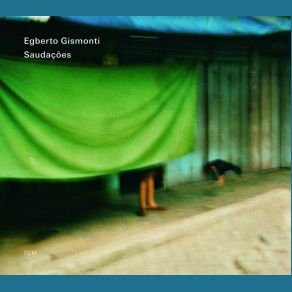Saudações / Saudacoes
Download links and information about Saudações / Saudacoes by Egberto Gismonti, Camerata Romeu, Alexandre Gismonti. This album was released in 2009 and it belongs to Jazz, Contemporary Jazz, World Music, Latin genres. It contains 17 tracks with total duration of 02:25:03 minutes.

|
|
|---|---|
| Artist: | Egberto Gismonti, Camerata Romeu, Alexandre Gismonti |
| Release date: | 2009 |
| Genre: | Jazz, Contemporary Jazz, World Music, Latin |
| Tracks: | 17 |
| Duration: | 02:25:03 |
| Buy it NOW at: | |
| Buy on iTunes $24.99 | |
| Buy on Amazon $21.93 | |
| Buy on Songswave €2.36 | |
| Buy on Songswave €2.55 | |
Tracks
[Edit]| No. | Title | Length |
|---|---|---|
| 1. | Sertões Veredas 1 | 13:27 |
| 2. | Sertões Veredas 2 | 12:34 |
| 3. | Sertões Veredas 3 | 9:03 |
| 4. | Sertões Veredas 4 | 10:44 |
| 5. | Sertões Veredas 5 | 10:43 |
| 6. | Sertões Veredas 6 | 9:54 |
| 7. | Sertões Veredas 7 (Palhaço Na Caravela) | 8:56 |
| 8. | Lundú | 4:00 |
| 9. | Mestiço & Caboclo | 13:03 |
| 10. | Dois Violões | 5:15 |
| 11. | Palhaço | 6:52 |
| 12. | Dança Dos Escravos | 8:12 |
| 13. | Chora Antônio | 6:17 |
| 14. | Zig Zag | 10:05 |
| 15. | Carmen | 4:56 |
| 16. | Águas & Dança | 6:31 |
| 17. | Saudações | 4:31 |
Details
[Edit]Saudações (translated from Portuguese as "greetings" or "salutations") is the first album composer, guitarist, and pianist Egberto Gismonti has issued for ECM in 12 years, since the symphonic Meeting Point. This is a double-disc affair, equally balanced between Gismonti's growing body of work as a large scale composer, and the second disc to be a series of guitar duets and solos with his son Alexandre.
Disc one is a beautiful and sprawling, seven-movement, 75-minute work entitled "Sertöes Veredas: A Tribute to Misigeneção" (A Tribute to Miscegenation), performed by the Camerata Romeu, a large Cuban all-female string ensemble directed by Zenaida Romeu. The work is far more expansive than that on Meeting Point, in that it ambitiously attempts to capture the essences of Brazil's people, its history, and its culture, through a music that reflects not only its wildly varying musical styles, but also its other popular reference points in cinema and literature. Each movement (entitled "Sertões Veradas") is divided into three parts. The first movement recalls folk music of the northeast region, or "cattle-calling" songs (all the cattle have been affected by drought and environmental distress). Therefore, despite its busyness, the polyphony reflects the notion of both life and the landscape changing, though the listener is only an observer, as he is throughout. "Sertões Veradas II" recalls the composer's fascination with and conflicting notions of Brazilian classicism. The slow, moving processional of " Sertões Veradas III" recall the Indian rituals from dances to ceremonial rites expressed not only in dynamic expanses, but also in silences. " Sertões Veradas V" entertains notions of the nation's cinema, all reflected on the motion of a wheel that recalls the principles of the nation's Cinema Novo. The work's final movement contains two songs written for his children, united by a compositional game that owes as much to Stravinsky as it does to Brazilian Indian traditions. There are also stops along the way for the country's fascination with Modernism and the circus — and yes, contained within this movement ("Sertões Veradas VI" )there are different carnival songs woven into the framework of Gismonti's own striated harmonic palette.
Disc two, entitled Dueotoes de Violoes, is a far more intimate affair, of course, and proves that Gismonti is still a very formidable guitarist, and that his son, Alexandre, is following closely in his footsteps. Recorded in 2007, this set features new works and dynamic, exciting duets of his classics, such as opener "Lundú," "Zig Zag," "Mestico & Cabolco," (the way jazz rhythms and classical technique are interwoven in this work make it among the most remarkable things on the set, and leaves its original version in the dust), and "Dança Dos Escravos." There are a three solo pieces as well. There's a stellar read of "Palhaço" and the album's title track, which conclude the set, as well as a gorgeous solo work performed by Alexandre entitled "Chora Antõnio." This disc will not disappoint those less interested in Gismonti's large ensemble work. It holds all the warmth and virtuosity of his finest recordings, yet with the addition of another guitarist, the dimensionality of these pieces is exponentially expanded.